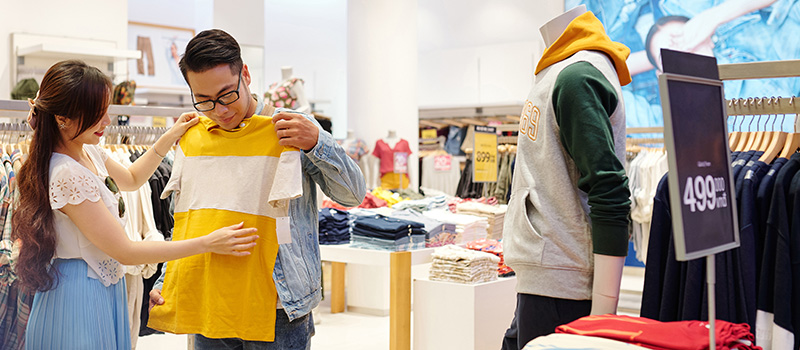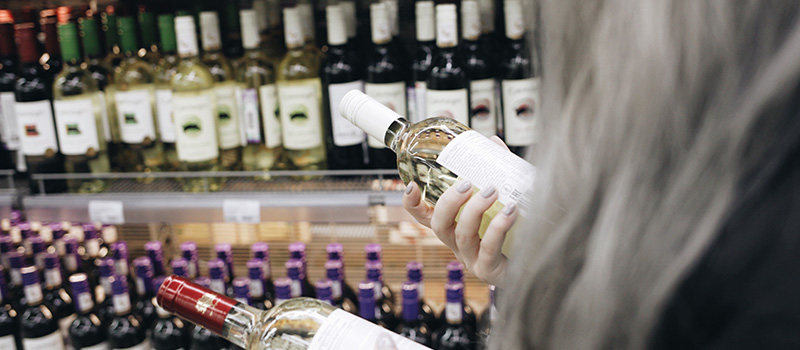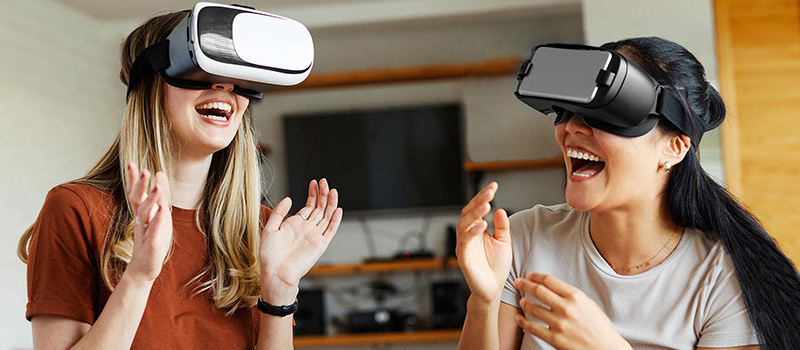Brand salience is a branding performance indicator that highlights the mental presence of a brand within the mind of the target audience in the buying decision.
By occupying pride of place in the audience’s mind, you make sure your brand is top-of-mind when the consumer comes to make a purchasing decision.
In this article, I’ll explain exactly what brand salience is, how it relates to other concepts such as brand awareness, brand recognition, and brand recall, and explore some ways for you to measure and grow brand salience.
What Is Brand Salience?

Brand salience is the extent to which your brand is in the mix when the customer is in the moment of making a purchasing decision.
It’s the focus on the purchasing decision that differentiates brand salience from brand recognition, brand awareness, and brand recall.
Brand Awareness:
The consumers’ familiarity with a particular brand name and its products or services.
Brand Recognition:
The consumers’ ability to recognize an identifying characteristic of one brand over its competitors.
Brand Recall:
The likelihood of someone remembering, or recalling, your brand, its products and its services, either independently or with a nudge in the right direction.
Brand salience relates to these terms but with the focus on the bottom of the sales funnel.
It answers the question:
“How likely is a consumer to remember or notice the brand at the point of the buying decision?”

High brand salience results from a strong brand with high brand memorability and/or visibility.
It means your brand is more likely to be noticed or remembered in the buying situation.
Google and Kleenex are examples of highly salient brands since the brand names have become a verb people use in relation to the product category.
We don’t suggest people “search it” anymore, we suggest they “Google it”.
Low brand salience is the result of limited or ineffective promotion or messaging of the brand.
In other words, either the brand is not telling prospects about what they do or they’re not doing it in a way that leads to them remembering in the buying decision.
With low brand salience, the customer may not be aware your brand exists.
Ultimately, to be in with a chance of purchase, your brand needs salience in the buying decision.
Developing a well considered brand strategy with unique positioning and communication, then mobilising the brand message with effective marketing tactics, is the tried and tested path to high brand salience.
Why Is Brand Salience Important?

I don’t need to overcomplicate this.
If the customer doesn’t remember or think of your brand when they consider a purchase, it’s very difficult for your brand to grow and make an impact.
The importance of that mental presence can’t be overstated.
Either your brand is recalled from memory or is made visible and available to discount the need for memory.
Getting your brand into the consciousness of your audience’s mind during the buying decision (or not) is often the difference between them choosing you, or some other brand that made itself mentally or physically present.
If you’re not in the audience’s mind at all during that critical moment, you need to think about why that’s the case and how to take up some of that space.
PRO Brand Strategy BluePrint
Build Brands Like A Pro Brand Strategist

How To Measure Brand Salience

Tracking metrics is critical to a branding and marketing strategy so that you can identify strengths and weaknesses.
So, when assessing brand salience, you’ll want a clear picture of where your brand sits on the high-to-low spectrum.
How memorable is your brand?
How well does the brand capture the attention of customers?
How often do we create the buying decision environment?
So how then do you measure brand salience?
Many top brands measure brand salience through market research like surveys and focus groups.
They’ll ask respondents how they feel about the brand, what associations they have with the brand, and if they consider the brand when making a buying decision.
Your survey or focus group sessions should also include different visual cues of some of your distinctive brand assets to see if these generate any emotional impact from respondents.
With cleverly structured questions, you can build a picture of your brand salience in relation to that of your competitors.
Explore Brand Strategy
Programs & Tools
What Drives Brand Salience?

To occupy space in your audience’s mind as a brand, you must make your brand either memorable or noticeable.
But, that’s easier said than done.
What can you do to give your brand a better chance of occupying the mind at a critical moment?
To understand how to increase brand salience, we need to delve deeper into what drives brand salience.

Byron Sharp, Professor of Marketing, has identified two core drivers of brand salience:
The quantity of memory structures
The quality of memory structures
The quantity of memory structures refers to the number of cues you give the audience to remember your brand. The more memory structures a person has for a brand the more likely the brand is to be salient.
I.e. How many distinctive brand assets do you have to create memory hooks in the mind of the audience.
The quality of memory structures refers to how well you can recollect the cues you’re given and how you attach them to the brand.
I.e. It’s all well and good that you have a logo a tagline and a jingle, but if none are memorable they aren’t doing their job.
The key point is that we are exposed to brands over time. Through that brand exposure, our brain forms associations between the brand name, its logo, products and so on.
Brands understand this and build positive associations through marketing campaigns and ongoing brand messaging.
This approach puts them well on their way to achieving brand salience, meaning the customer isn’t just aware of the brand, but actually considers the brand at the moment of making a purchase.
How To Increase Your Brand Salience

Brands need strategies to create longer-term memories that resonate with their audience.
Those powerful memories give your brand a better chance of cropping up at the right time in the consumer’s mind.
We know that emotion plays a significant role in both memory-making and the buying decision itself.
We’ve all heard the phrase that customers buy based on emotions and justify later with logic.
You need to give emotional reasons rather than logical reasons that your brand is a better solution than a competitor when building brand salience.
Tell Emotional Stories

If you can build an emotional connection between the brand and its audience, you give yourself a better chance of retention.
Smart brands use brand storytelling to engage their audience, communicate brand value, and gain customer loyalty.
Stories evoke emotion more than facts or figures, so lure the audience in with a narrative that builds positive associations.
This brand story may not even refer to your products or services; it’s more about building that emotional connection between the brand and the consumer.
You’ll find positive storytelling increases the quality of the memory structures that Professor Sharp identified, meaning that it’s a powerful tool for creating that long-lasting resonance with the audience.
Put simply, a customer is more likely to adopt a brand they have an emotional connection to over one they don’t.
Be Consistent

Get your consistent message in front of your audience.
If you tell the same brand story through various channels, you strengthen that neural connection in the audience’s mind.
If you use the same visual and verbal assets over time, they become familiar and will lead back to experiences.
On the other hand, mixed messages only confuse the audience.
Whether that’s a story that contradicts or confuses or an asset that changes, inconsistency is a primitive red flag the consumer’s subconscious picks up on.
Conduct market research to understand what channels are most appropriate to making connections and staying top of mind with your audience.
Test to see what works best to get your consistent message seen without over-saturating and harassing your target audience.
Design The Brand Experience

Take the time to outline the steps a new customer goes through when interacting with your brand.
If you outline the steps, you can craft every touchpoint to make every interaction meaningful.
In this way, you design the entire brand experience to create a lasting impression on the customer.
I emphasize the word ‘lasting’ here because it’s an important factor.
It’s the long-term resonance of a brand experience that will lead to brand salience.
Be Bold

Try to take the road less traveled with your branding.
Don’t look at what everybody else is doing in your market and feel you have to mimic what seems to work.
Think about it.
How salient will your brand be if the actions you’re taking have been seen time and again by competing brands by your prospects?
Instead, head in the other direction and offer differentiation.
Ask yourself the question.
“Is what we’re doing worthy of being remembered in the buying decision?”.
Create a bold, innovative, unique branding strategy that gives your brand the best chance of standing out in a purchasing decision.
Over To You
Building brand salience is much more precise than brand awareness, brand recognition, or brand recall.
It’s laser-focused on the moment of the buying decision and whether a customer is going to consider your brand in that critical moment.
Since so much of the purchasing decision is emotional, brands that are salient have taken pains to build emotional connections with potential customers to improve brand salience.
Household names like Coca-cola and Starbucks didn’t achieve high brand salience overnight. They have built brand equity with the consumer over a long period of consistent brand messaging.
That emotional connection is the most powerful tool to ensure your brand is in the mix and top-of-mind when a customer is looking to buy.
On-Demand Digital Program
Brand Master Secrets
Make the transition from hired-gun to highly valued brand strategist in less than 30 days. The systems, frameworks and tools inside this comprehensive program are all you need to level up.







